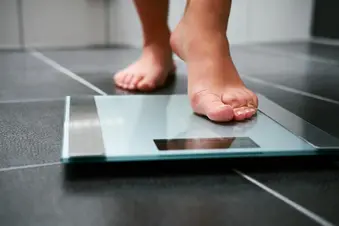
Here are simple ways you can ease osteoarthritis symptoms on your own, at home.
1. Stay active. Exercise may be the last thing you want to do when your arthritis hurts. But many studies show that physical activity is one of the best ways to improve your quality of life. Exercise boosts your energy. It can also strengthen your muscles and bones, and help keep your joints flexible. Try resistance training to build stronger muscles. Your muscles protect and support joints affected by arthritis. Go for aerobic workouts to burn calories, which will help you lose weight. Maintaining a healthy weight relieves stress on painful joints. Of course, if you're experiencing a bad flare-up, it may be better not to exercise until the pain subsides.
2. Eat a balanced diet. Studies show that a variety of nutrients may help ease arthritis symptoms. Foods rich in vitamin C, especially fruits and vegetables, may help. Omega-3 fatty acids, found in fish and fish oil, may also help relieve pain. Experts say it's best to focus on healthy foods rather than on single nutrients. You can get all the nutrients you need simply by following a balanced diet. Make sure your menu includes plenty of fruits and vegetables, whole grains, low-fat dairy, fish, and lean meats such as turkey and pork tenderloin. Also, choose healthy fats, such as nuts and avocados, and healthy oils, including olive and canola oil.
3. Lose weight. Being overweight puts undue strain on weight-bearing joints such as your knees, spine, hips, ankles, and feet. Losing weight can ease symptoms of arthritis. Shedding pounds and keeping them off isn't easy. Think baby steps. Make small changes each day that help you eat smaller portions and burn more calories.
4. Sleep well. A good night's sleep will help you cope with the pain and stress of arthritis. To sleep better, try going to bed at the same time every night. Take distractions like television and computers out of your bedroom. If you're uncomfortable in bed because of arthritis, try using pillows to take the pressure off painful joints. If you have frequent sleep problems, talk to your doctor.
5. Use hot or cold packs. By increasing blood flow, hot compresses can ease pain and stiffness. Cold compresses reduce swelling. You may want to experiment with heat versus cold packs to see what works best for you.
6. Keep pain under control. Over-the-counter medications can help ease arthritis pain. One of the most common is acetaminophen (Tylenol and store brands) because it doesn't upset the stomach. However, taking more than recommended increases the chance of side effects, including liver problems. Other over-the-counter medications can also help, including aspirin, ibuprofen (Advil, Motrin), or naproxen sodium (Aleve and store brands). Possible side effects include stomach irritation and bleeding. Read labels carefully to make sure you're taking the medication correctly. Also, don't take any pain reliever for more than 10 days without talking to your doctor.
7. Talk to your doctor about supplements and complementary medicine. Many supplements have been tested for the treatment of arthritis. Glucosamine and SAMe show the most promise. Glucosamine, often along with chondroitin, has helped improve pain in some studies, but not in others. Some medical research shows that SAMe, a chemical found in the body, may work as well as some over-the-counter medications, although more research is needed. If you do try supplements, you may need to take them for a month or more before you feel the full effects. People with arthritis also turn to treatments such as acupuncture and massage. Acupuncture has been shown to ease knee pain and improve function. Massage can increase blood flow and warmth to painful joints. Be sure to seek out a skilled practitioner who has experience working with people with arthritis.
8. Try splints, braces, and other aids. Devices that support painful joints, such as splints, braces, and canes can help ease your discomfort and prevent injury. Other items such as electric can openers and shower chairs can also help make your everyday life easier.
9. Seek support. Living with arthritis isn't easy. Finding other people you can talk to and share ideas with can help. Check out arthritis support groups online or in your area.
10. Stay positive. Your mental outlook can have a big impact on how you feel and how well you function. Every day, try to do something you enjoy. Spend time with friends. Develop hobbies that you can do even with arthritis. Focus on your abilities rather than your disabilities.
Show Sources
Photo Credit: Rostislav_Sedlacek / Getty Images
SOURCES:
NIAMS, "Handout on Health: Osteoarthritis."
Vincent, H. PM&R, May 2012.
Messier, S. BMC Musculoskeletal Disorders, July 2009.
Magrans-Courtney, T. Journal of the International Society of Sports Nutrition, 2011.
Chlebowski, R. Maturitas, January 2011.
Black, C. Health Technology Assessment, November 2009.
Wang, Y. Arthritis Research & Therapy, 2007.
American Academy of Orthopaedic Surgeons, "Osteoarthritis."
Gruenwald, J. Advances in Therapy, September 2009.
White, A. Rheumatology, March 2007.